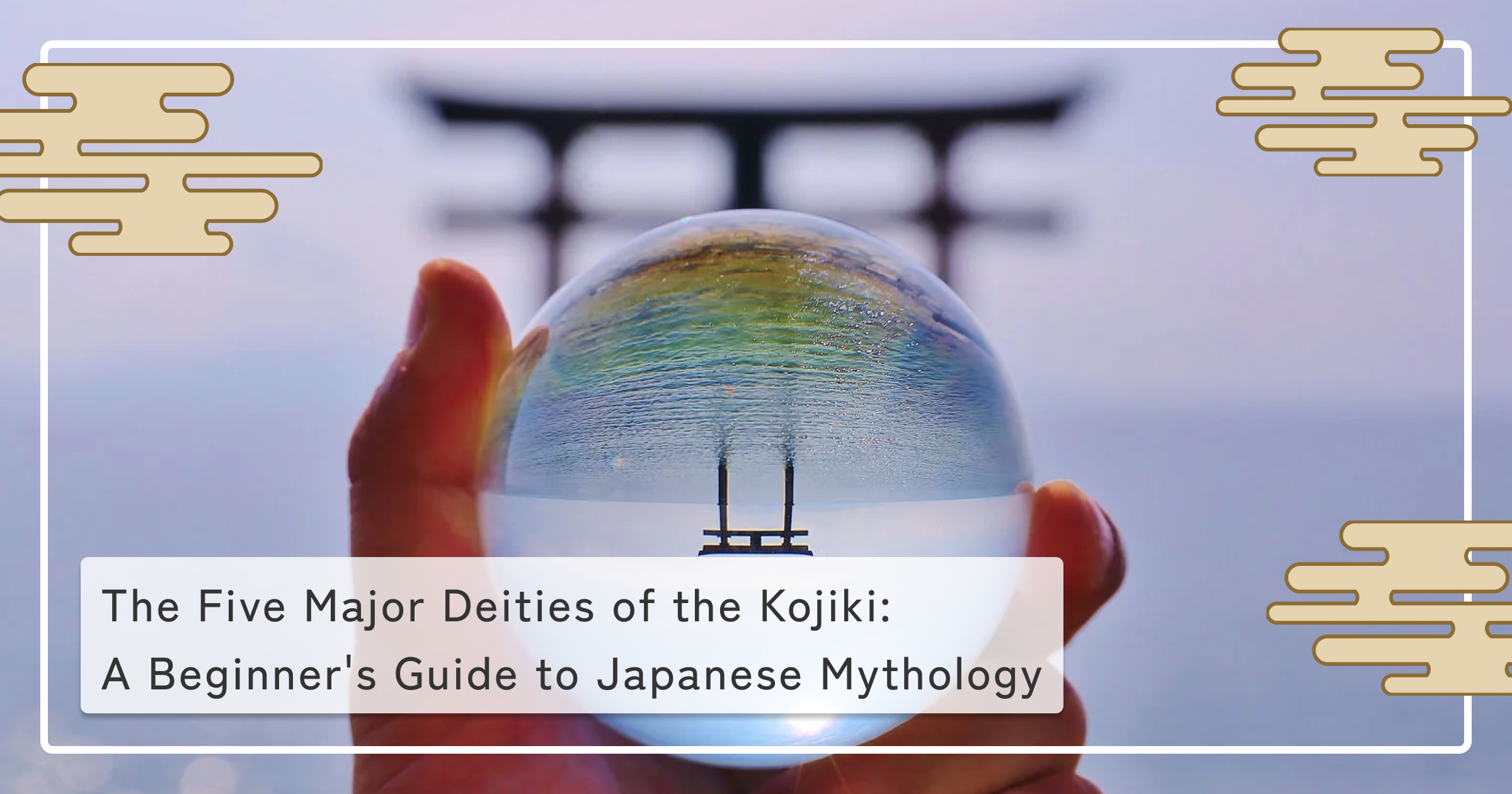
The Five Major Deities of the Kojiki: A Beginner's Guide to Japanese Mythology
Kojiki is Japan’s oldest mythological text, featuring a vast array of deities. Here, we introduce five of the most important gods (known as the “Five Great Deities”) in a beginner-friendly way.
What is the Kojiki?
Compiled in the year 712, the *Kojiki* ("Records of Ancient Matters") is Japan’s oldest historical and mythological chronicle. It documents the birth of the gods and the imperial lineage of Japan. The mythological section, called *Kamiyo* (Age of the Gods), begins with the creation of heaven and earth and unfolds a grand narrative.
Who Are the Five Great Deities?
Kojiki features countless deities known as *Yaoyorozu no Kami* (literally, "Eight Million Gods"). Among them, five deities are especially revered and often referred to as the “Five Great Deities” or the “Most Sacred Gods.” Here are the five:
Ame-no-Minakanushi-no-Kami
The first deity to appear in the creation of the universe. The name means “Lord of the Center of Heaven,” symbolizing the cosmic source of all existence. This is a hidden god (*Hitorigami*) who embodies the will of creation itself.
Role: Primordial god of universal creation
Keywords: Creation, cosmos, central deity
Takamimusubi-no-Kami
“Musubi” refers to life, growth, and creation. This god represents the power of expansion and prosperity within creation. Later, he was associated with the imperial ancestors.
Role: God of creation and growth
Keywords: Musubi, growth, prosperity
Kamimusubi-no-Kami
The counterpart to Takamimusubi. This deity embodies the divine regenerative force—symbolizing healing, medicine, and the cycle of life.
Role: God of healing and natural regeneration
Keywords: Medicine, healing, rebirth
Izanagi-no-Mikoto
A creator god who, with his wife Izanami, gave birth to the Japanese islands and numerous deities. After returning from the underworld, he performed a purification ritual, giving rise to the three major deities: Amaterasu, Tsukuyomi, and Susanoo.
Role: Father of Japan and the gods
Keywords: Island creation, god creation, purification
Izanami-no-Mikoto
The goddess who partnered with Izanagi to give birth to the land and gods of Japan. She died after giving birth to the fire god, Kagutsuchi, and became the goddess of the underworld. She represents both death and rebirth.
Role: Mother of Japan and the gods
Keywords: Mother goddess, fire, death and rebirth
Why Are These Five Deities Important?
These five gods play essential roles in the key events of the Kojiki—such as the creation of the universe, the formation of the land, and the birth of other deities. The first three gods (Ame-no-Minakanushi, Takamimusubi, and Kamimusubi) are collectively called the “Three Creating Deities” (*Zōka Sanshin*), forming the foundation of Japanese mythology.
Izanagi and Izanami, on the other hand, created the land of Japan itself and are deeply associated with cultural and spiritual origins.
Why Read the Kojiki Today?
The Kojiki still holds value today for many reasons.
Understand the Roots of Japanese Culture
Shrines, festivals, and Shinto beliefs all trace back to the Kojiki.
Learn the Origins of Place Names and Customs
It offers insights into regional myths and traditions throughout Japan.
Apply to Business and Human Relations
The stories of the gods include themes of conflict and reconciliation, trust and betrayal—lessons still relevant in today’s world.
Summary: Explore Kojiki Through the Five Great Deities
The five deities introduced in the Kojiki are essential to understanding Japanese mythology. Learning their roles can deepen your appreciation when visiting shrines or exploring local legends.
Begin your journey through the Kojiki by reading about the “Three Creating Deities” and the story of Izanagi and Izanami—and step into the mythological world of Japan.